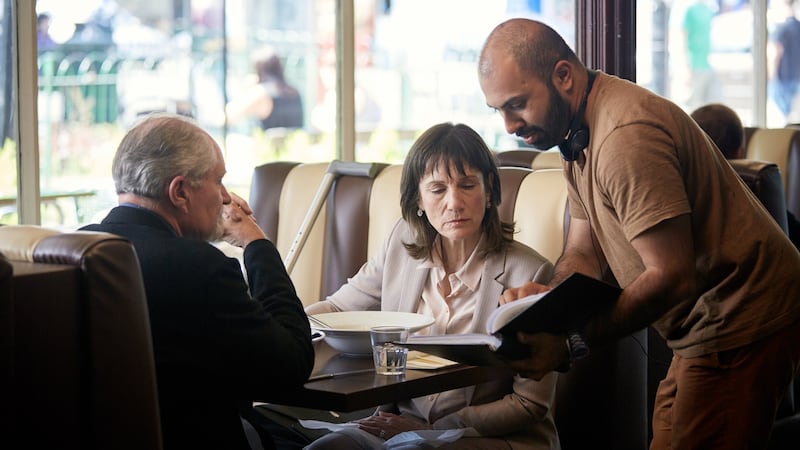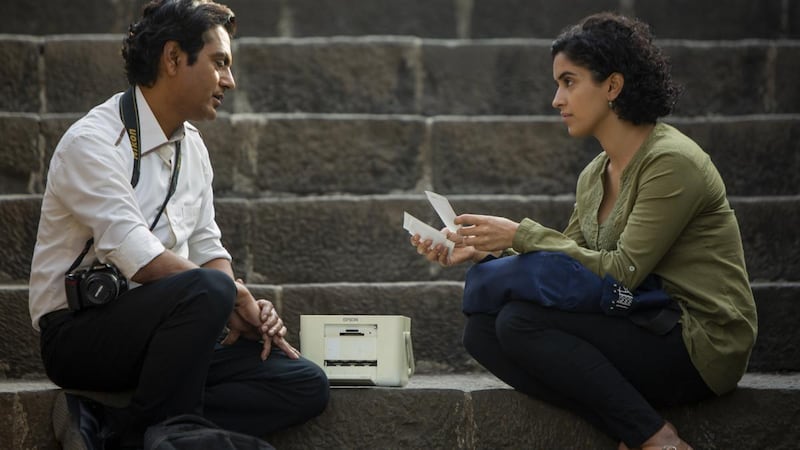The phrase Bollywood cinema conjures lavishly-orchestrated song and dance numbers, high-octane action sequences, star-crossed lovers, and melodrama. But an increasing number of Indian directors don’t fit neatly into that picture.
In recent years, Alankrita Shrivastava made a splash at international festivals, including Toronto, with Lipstick Under My Burkha (2017), a film that was denied certification by India’s unofficial censor board for being “lady oriented”. Director and producer Hansal Mehta juggles commercial erotic thrillers with socially-conscious films, including Aligarh, which concerns the real life case of Ramchandra Siras, a college professor who was suspended for his sexuality. Anurag Kashyap, meanwhile, has become a regular fixture at the Directors’ Fortnight at Cannes with Gangs of Wasseypur (2012), Ugly (2014), and Raman Raghav 2.0 (2016).
Growing up in Mumbai, writer-director Ritesh Batra watched an untold number of films that drew on that rich girl-meets-poor boy conceit
Six years ago the filmmaker Ritesh Batra, another non-conforming Hindi director, arrived at the Cannes Film Festival with his debut feature, The Lunchbox. By the time the director departed the Croisette, he had secured a distribution deal with Sony Pictures Classics, a chorus of rave reviews, and had won the Grand Rail d’Or.
The film, which depicts an intimate relationship between a bored housewife and a grouchy accountant, draws on Mumbai’s fantastically intricate lunchbox delivery system and was nominated for a Bafta after becoming the biggest grossing foreign language title of 2014 across North America, Europe and Australia.
“I wasn’t expecting that kind of thing,” says Batra. “How could I be? As a filmmaker you’re always thinking about the bigger things but you are too constantly busy with the work to think beyond it. For me, I have to be writing, I have to be editing, I have to be directing. And, since I’ve got a chance to do this for a living, if I’m not doing one of those three things that I go crazy.”

After the success of The Lunchbox, Batra was in demand. His second feature retreated from the bustle of Mumbai into the quietude of English repression with 2017’s The Sense of an Ending, starring Jim Broadbent, Charlotte Rampling and Michelle Dockery, and based on Julian Barnes’s novel concerning the long-term emotional impact of a love triangle. He subsequently directed Our Souls at Night, a prestige picture from Netflix, which reunited Robert Redford and Jane Fonda almost four decades after the pair headlined 1979’s The Electric Horseman. They were, he says, as dreamy to work with as one could imagine.
“It’s a big responsibility,” says Batra. “But they are very generous people. The three of us sat down together and did research for a week. They were a real joy.”
‘Intimately connected’
Photograph, a tender meet-cute drama, brings Batra, who is now based in New York, back to Mumbai and back to writing and directing his own material.
“The fact that I’ve written it definitely changes things because it’s more intimately connected to me, I suppose,” says Batra. “I just enjoy the whole writing process a lot. And I really missed the solitary nature of writing. It’s definitely easier to direct something that you’ve written. I find a real joy in it.”
Critics have repeatedly praised Photograph as a love-letter to Mumbai and the film features scenes shot at the city’s imposing Gateway to India, a thronging setting that looks like a logistical nightmare, especially for a filmmaker like Batra who favours long, multiple takes over pick-ups – pick-ups, he says, are unfair to the actors and ruin the feeling of a scene.
“We had two mornings to shoot there so those scenes weren’t too difficult,” says Batra. “The people you see in those shots are our people. You can’t think about composing a love-letter to the city. You can’t intellectualise a film in that way. You have to keep moving. And the main challenge is keeping the city out of the shot so that you can stay focused on the actors. There are 52 speaking parts in the film and you have to tell the story through the characters. And in Bombay there is so much going on and so much colour and so many people. So the city keeps finding its way back into the movie.”
Photograph concerns a blossoming romance between a struggling Mumbai street photographer named Rafi (Nawazuddin Siddiqui) who touts around the Gateway to India and a well-to-do accounting student named Miloni (Sanya Malhotra), who is expected to graduate at the top of her class and to find a suitable husband by her middle-class family.

When Rafi’s grandmother (Farrukh Jaffar) demands that he finds a wife, he sends her a photo of Miloni, claiming that she is his fiancee. When the old woman hops on the next train to Mumbai, it falls to Rafi to track down Miloni and persuade her to pose as his betrothed. They are an unlikely match: she’s rich, light-skinned, Gujarati-speaking, and Hindu; he’s Urdu-speaking Muslim migrant who has come from Mumbai from a village hoping to pay off a family debt.
Class system
Growing up in Mumbai, writer-director Ritesh Batra watched an untold number of films that drew on that rich girl-meets-poor boy conceit.
“A movie like this has to be believable,” says Batra. “And in the Hindi films of the 1980s and 1990s where a poor guy and a rich girl would fall in love – he would always be a motor mechanic and the rich girl always had a bad temper – it was never believable. There was a new version of that film every month. They would fall in love for no reason. I think a story like that would never really happen in India. It’s a fantasy. Two people like that wouldn’t spend any time together. The extent of transaction between those two classes would be: ‘How much is this?’ and ‘Here’s the change’. And that would be as far as it would go. So trying to make a movie in which these people spend time together and find out about each other and about themselves was a lot of fun. Even though it’s fantasy, it has to be a livable world. And it can’t be too real without turning it into a political film. We didn’t want to show any grinding poverty, as that would distract from the story.”
Photograph reunites Batra with The Lunchbox star, Nawazuddin Siddiqui. His character in the new film, notes the director, echoes certain aspects of the actor’s life. A former chemist from rural northern India, Nawazuddin Siddiqui was in his 30s before he became a Bollywood star, on the back of performances in Anurag Kashyap’s Black Friday (2007) and Anurag Kashyap’s Gangs of Wasseypur (2012).
“He comes from the same region as his character does,” says Batra of Siddiqui.
“And he spent 14 years in Bombay trying to break into the acting profession. So in many ways he’s playing himself. We had worked together before. Sanya Malhotra came through in normal auditioning process and she was just fabulous. She can do a lot without words. I was so, so lucky with both of them.”
In common with Nawazuddin Siddiqui, Ritesh Batra is also something of a late bloomer. Born into a middle-class family in Mumbai in 1979, Ritesh completed secondary school in Mumbai and relocated to the United States where he read Economics at Drake University in Iowa. Upon graduation, he worked as a consultant at Deloitte for three years before returning to college to pursue his lifelong dream of becoming a filmmaker. He attended New York University but dropped out when his short films, including the Fipresci-honoured Café Regular Cairo (2011) started getting attention of the international festival circuit. His debut feature, The Lunchbox, took four years to develop.
“There was just no way to get it made before then,” says Batra, who cites Louis Malle, Satyajit Ray and Abbas Kiarostami, among his primary influences. “The script took a long time and for many years, that is all it was: me and the script. I don’t think I could have gotten a chance to make it sooner than I did. Movies have their own sort of life. They happen when they happen; you can’t really predict it. And then you meet people who are affected by the movie and you can’t have predicted that either.”
Photograph is released August 2nd





















